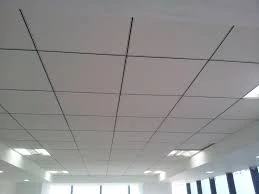10 月 . 06, 2024 00:33 Back to list
fire rated access panels for drywall ceilings
Fire Rated Access Panels for Drywall Ceilings Ensuring Safety and Compliance
In the construction and building maintenance industries, fire safety is a critical concern that cannot be overlooked. Access panels serve as crucial components in various structures, especially when installed in drywall ceilings. When it comes to fire-rated access panels, their purpose extends beyond mere convenience; they are integral to maintaining the integrity of fire-rated ceilings while allowing for necessary access to ductwork, electrical systems, and plumbing. This article explores the importance, specifications, and selections of fire-rated access panels for drywall ceilings.
Understanding Fire-Rated Access Panels
Fire-rated access panels are specifically designed to provide openings in walls and ceilings that require a certain fire resistance rating. This rating is a measure of how long a structure can withstand exposure to fire while maintaining its integrity. Fire-rated access panels are constructed from non-combustible materials and are equipped with intumescent seals that expand in response to heat, thereby preventing smoke and flames from passing through the opening.
Importance of Fire Ratings
Building codes and regulations dictate the use of fire-rated access panels in specific areas, particularly in commercial and industrial spaces. These fixtures play a vital role in compartmentalizing fire, thereby slowing its spread and providing occupants additional time to evacuate. When integrated into fire-rated ceilings, these panels ensure that the fire-resistance characteristics of the ceiling are maintained. This compliance with safety regulations not only protects lives but also minimizes property damage in the event of a fire.
Key Features
1. Material Composition Fire-rated access panels are often made from heavy-duty metal or composite materials. The choice of materials is crucial as it directly influences the panel's fire resistance, durability, and longevity.
2. Intumescent Seals These seals are a hallmark of fire-rated panels. Upon exposure to high temperatures, the seals expand, filling any gaps around the access panel and forming a barrier against smoke and flames.
fire rated access panels for drywall ceilings

3. Ease of Access Despite their fire-resistance capabilities, these access panels are designed for quick and easy access to the concealed mechanical and electrical services behind drywall ceilings. Many panels feature flush designs that blend seamlessly into the ceiling, maintaining the aesthetic appeal of the space.
4. Safety Compliance Most fire-rated access panels are tested and certified by recognized testing laboratories to meet local and national building codes. It's essential for architects, builders, and homeowners to ensure that the panels they use are compliant with these standards.
Installation Considerations
When installing fire-rated access panels in drywall ceilings, certain best practices should be followed
- Proper Placement Panels should be strategically located to provide efficient access to essential utility systems. However, their placement must also comply with fire safety regulations.
- Sealing The installation process should include the proper sealing of edges to maintain the fire rating. Any gaps or improper seals can compromise the panel's effectiveness in preventing smoke and flames from penetrating the access opening.
- Regular Inspections Periodic checks of the access panels are necessary to ensure that they are functioning correctly. Maintenance teams should inspect seals for deterioration and verify that panels are easily operable in case of an emergency.
Conclusion
Fire-rated access panels for drywall ceilings are more than a functional necessity; they are a critical part of a building's fire protection strategy. By understanding their significance, features, and proper installation practices, builders and property owners can enhance the safety of their structures while ensuring compliance with local fire safety regulations. Investing in high-quality fire-rated access panels is an investment in the safety and resilience of the property, protecting not only the building and its contents but also the lives of those who occupy it. As fire safety regulations continue to evolve, the use of these panels will become increasingly essential, underscoring the need for education and awareness within the construction industry.
-
Revolutionizing Interior Design with Ceilings t grid Suspended SystemNewsOct.29,2024
-
Revolutionizing Ceiling Design with ceiling access panel with Gypsum Tile WaterproofNewsOct.29,2024
-
Revolutionizing Interior Design with PVC Gypsum Ceiling: A Comprehensive GuideNewsOct.29,2024
-
Elevating Interior Design with High quality Mineral Fiber Ceiling TilesNewsOct.29,2024
-
Revolutionizing Interior Design with PVC Gypsum Ceiling: A Comprehensive GuideNewsOct.29,2024
-
Elevating Interior Design with High-Quality Mineral Fiber Ceiling Tiles: A Comprehensive GuideNewsOct.29,2024







